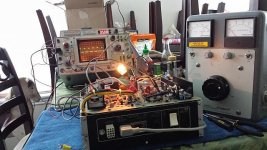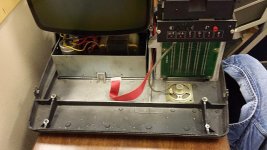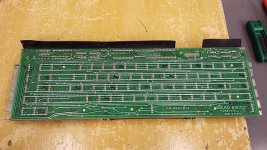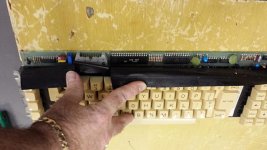Having a thought on this overnight
There are 4 choppers, independently controlling either a +27 or -27V supply, three are positive rail supplies, for +5, +12 and +15V
The other is -15V with a separate regulator that bleeds off the -15 supply to create -12.
+15 and -15 are only for the printer.
The +12 and -12 rails have to come up first, the +5 rail chopper is padded with a 100 Ohm resistance, presumably to cause it to come up after the +12 and -12 rails.
However, what's happening is the +5 is wide open (as if the chopper were short) and the clock doesn't come up to provide the chopper signal until the +5 has tripped out on the crowbar. I need to check see if the chopper is being held (or pulled) open by a false signal from somewhere because I don't know why it's rising up so quickly before the other circuits become active- the others don't come on until the clock starts to operate.
The more I think about it the more it makes sense, but the less it does because I can't see why the signal should be operational until the clock becomes active.
Result- the +5 comes on, rises to about 5.8V then kicks out, the rest of the board becomes active and the +5 chopper and crowbar get really rather warm.
I'm thinking this is a problem the board's had for a while...
--Phil






